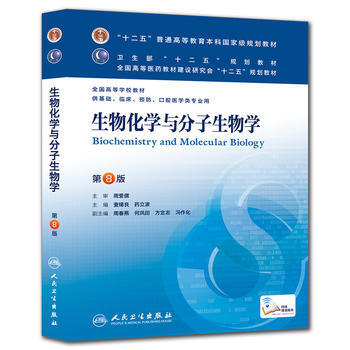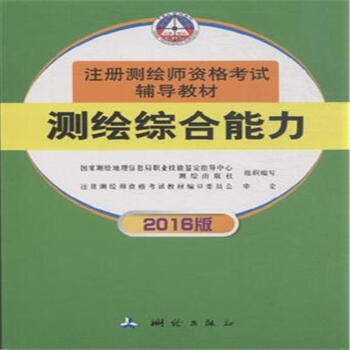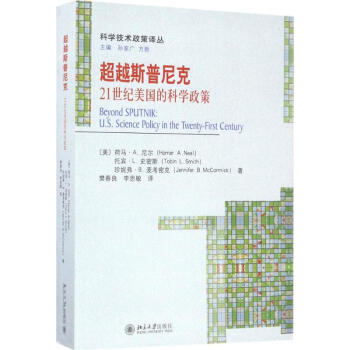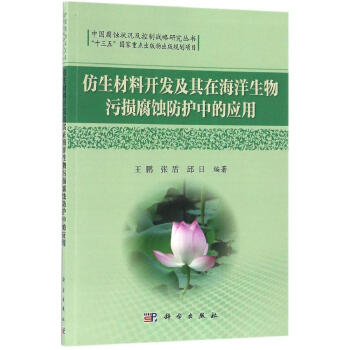

具体描述
Preface to the Second Edition
Preface to the First Edition
1. The Nonlinear Optical Susceptibility
1.1. Introduction to Nonlinear Optics
1.2. Descriptions of Nonlinear Optical Processes
1.3. Formal Definition of the Nonlinear Susceptibility
1.4. Nonlinear Susceptibility of a Classical Anharmonic Oscillator
1.5. Properties of the Nonlinear Susceptibility
1.6. Time-Domain Description of Optical Nonlinearities
1.7. Kramers-Kronig Relations in Linear and Nonlinear Optics
Problems
References
2. Wave-Equation Description of Nonlinear Optical Interactions
2.1. The Wave Equation for Nonlinear Optical Media
2.2. The Coupled-Wave Equations for Sum-Frequency Generation
2.3. Phase Matching
2.4. Quasi-Phase-Matching
2.5. The Manley-Rowe Relations
2.6. Sum-Frequency Generation
2.7. Second-Harmonic Generation
2.8. Difference-Frequency Generation and Parametric Amplification
2.9. Optical Parametric Oscillators
2.10. Nonlinear Optical Interactions with Focused Gaussian Beams
2.11. Nonlinear Optics at an Interface
Problems
References
3. Quantum-Mechanical Theory of the Nonlinear Optical Susceptibility
3.1. Introduction
3.2. SchriSdinger Calculation of Nonlinear Optical Susceptibility
3.3. Density Matrix Formulation of Quantum Mechanics
3.4. Perturbation Solution of the Density Matrix Equation of Motion
3.5. Density Matrix Calculation of the Linear Susceptibility
3.6. Density Matrix Calculation of the Second-Order Susceptibility
3.7. Density Matrix Calculation of the Third-Order Susceptibility
3.8. Electromagnetically Induced Transparency
3.9. Local-Field Corrections to the Nonlinear Optical Susceptibility
Problems
References
4. The Intensity-Dependent Refractive Index
4.1. Descriptions of the Intensity-Dependent Refractive Index
4.2. Tensor Nature of the Third-Order Susceptibility
4.3. Nonresonant Electronic Nonlinearities
4.4. Nonlinearities Due to Molecular Orientation
4.5. Thermal Nonlinear Optical Effects
4.6. Semiconductor Nonlinearities
4.7. Concluding Remarks References
5. Molecular Origin of the Nonlinear Optical Response
5.1. Nonlinear Susceptibilities Calculated Using Time-Independent Perturbation Theory
5.2. Semiempirical Models of the Nonlinear Optical Susceptibility
Model of Boling, Glass, and Owyoung
5.3. Nonlinear Optical Properties of Conjugated Polymers
5.4. Bond-Charge Model of Nonlinear Optical Properties
5.5. Nonlinear Optics of Chiral Media
5.6. Nonlinear Optics of Liquid Crystals
Problems
References
6. Nonlinear Optics in the Two-Level Approximation
6.1. Introduction
6.2. Density Matrix Equations of Motion for a Two-Level Atom
6.3. Steady-State Response of a Two-Level Atom to a Monochromatic Field
6.4. Optical Bloch Equations
6.5. Rabi Oscillations and Dressed Atomic States
6.6. Optical Wave Mixing in Two-Level Systems
Problems
References
7. Processes Resulting from the Intensity-Dependent Refractive Index
7.1. Self-Focusing of Light and Other Self-Action Effects
7.2. Optical Phase Conjugation
7.3. Optical Bistability and Optical Switching
7.4. Two-Beam Coupling
7.5. Pulse Propagation and Temporal Solitons
Problems
References
8. Spontaneous Light Scattering and Acoustooptics
8.1. Features of Spontaneous Light Scattering
8.2. Microscopic Theory of Light Scattering
8.3. Thermodynamic Theory of Scalar Light Scattering
8.4. Acoustooptics
Problems
References
9. Stimulated Brillouin and Stimulated Rayleigh Scattering
9.1. Stimulated Scattering Processes
9.2. Electrostriction
9.3. Stimulated Brillouin Scattering (Induced by Electrostriction)
9.4. Phase Conjugation by Stimulated Brillouin Scattering
9.5. Stimulated Brillouin Scattering in Gases
9.6. Stimulated Brillouin and Stimulated Rayleigh Scattering
Problems
References
10. Stimulated Raman Scattering and Stimulated Rayleigh-Wing Scattering
10.1. The Spontaneous Raman Effect
10.2. Spontaneous versus Stimulated Raman Scattering
10.3. Stimulated Raman Scattering Described by the Nonlinear Polarization
10.4. Stokes-Anti-Stokes Coupling in Stimulated Raman Scattering
10.5. Coherent Anti-Stokes Raman Scattering
10.6. Stimulated Rayleigh-Wing Scattering
Problems
References
11. The Electrooptic and Photorefractive Effects
11.1. Introduction to the Electrooptic Effect
11.2. Linear Electrooptic Effect
11.3. Electrooptic Modulators
11.4. Introduction to the Photorefractive Effect
11.5. Photorefractive Equations of Kuldatarev et al.
11.6. Two-Beam Coupling in Photorefractive Materials
11.7. Four-Wave Mixing in Photorefractive Materials
Problems
References
12. Optically Induced Damage and Multiphoton Absorption
12.1. Introduction to Optical Damage
12.2. Avalanche-Breakdown Model
12.3. Influence of Laser Pulse Duration
12.4. Direct Photoionization
12.5. Multiphoton Absorption and Multiphoton Ionization
Problems
References
13. Ultrafast and Intense-Field Nonlinear Optics
13.1. Introduction
13.2. Ultrashort Pulse Propagation Equation
13.3. Interpretation of the Ultrashort-Pulse Propagation Equation
13.4. Intense-Field Nonlinear Optics
13.5. Motion of a Free Electron in a Laser Field
13.6. High-Harmonic Generation
13.7. Nonlinear Optics of Plasmas and Relativistic Nonlinear Optics
13.8. Nonlinear Quantum Electrodynamics
Problem
References
Appendices
A. The SI System of Units
Further reading
B. The Gaussian System of Units
Further reading
C. Systems of Units in Nonlinear Optics
D. Relationship between Intensity and Field Strength
E. Physical Constants
Index前言/序言 It has been a great pleasure for me to have prepared the latest edition of my book on nonlinear optics. My intrigue in the subject matter of this book is as strong as it was when the first edition was published in 1992.
The principal changes present in the third edition are as follows: (1) The book has been entirely rewritten using the SI system of units. I personally prefer the elegance of the gaussian system of units, which was used in the first two editions, but I realize that most readers would prefer the SI system, and the change was made for this reason. (2) In addition, a large number of minor changes have been made throughout the text to clarify the intended meaning and to make the arguments easier to follow. I am indebted to the countless comments received from students and colleagues both in Rochester and from around the world that have allowed me to improve the writing in this manner. (3) Moreover, several sections that treat entirely new material have beenadded. Applications of harmonic generation, including applications within the fields of microscopy and biophotonics, are treated in Subsection 2.7.1. Electromagnetically induced transparency is treated in Section 3.8. Some brief but crucial comments regarding limitations to the maximum size of the intensity induced refractive-index change are made in Section 4.7. The use of nonlinear optical methods for inducing unusual values of the group velocity of light are discussed briefly in Section 3.8 and in Subsection 6.6.2. Spectroscopy based on coherent anti-Stokes Raman scattering (CARS) is discussed in Section 10.5. In addition, the appendix has been expanded to include brief descriptions of both the SI and gaussian systems of units and procedures for conversion between them.
用户评价
我是一名光学工程专业的学生,最近在学习关于激光器设计和光纤通信的课程,其中涉及到一些非常前沿的理论和技术。在老师的推荐下,我了解到有这本书,并且听说这本书在业内有着很高的评价。拿到书后,我首先被其丰富的章节内容所吸引,从基础的光学理论,到各种复杂的非线性光学现象,再到实际的应用,几乎涵盖了整个非线性光学领域。作者的讲解非常深入,逻辑性很强,每一个公式的推导都有详细的步骤,并且配以清晰的图示,这对于我这种需要扎实掌握理论基础的学生来说,帮助非常大。我尤其欣赏书中对一些前沿技术的介绍,例如“超快非线性光学”和“光子晶体中的非线性效应”,这些内容对于我今后的学习和研究方向有着重要的参考价值。我打算将这本书作为我重要的学习资料,反复研读,希望能够全面掌握非线性光学的知识体系。
评分我对光学领域一直保持着浓厚的兴趣,但接触到的书籍大多是偏向于基础理论或者应用方面的科普读物。这次偶然的机会,我看到了这本书,名字听起来就很有深度,立刻引起了我的好奇。我平时喜欢研究一些更深层次的物理现象,所以当我看到书的目录时,就对里面一些关于“光在介质中的非线性响应”和“多光子过程”的章节充满了期待。拿到书后,我先快速浏览了一遍,感觉这本书的结构安排得非常合理,从最基本的光的性质讲起,逐步深入到复杂的非线性现象。作者的写作风格非常清晰,语言流畅,即使是复杂的数学推导,也通过大量的解释和辅助说明,让读者更容易理解。我特别喜欢作者在讲解一些经典实验时,会详细介绍实验的设计思路和结果分析,这让我感觉不仅仅是在学习知识,更是在学习如何进行科学研究。这本书绝对是光学爱好者或者专业人士不可多得的宝藏。
评分这本书的封面设计就透着一股严谨的学术气息,深蓝色的背景搭配烫金的字体,稳重又不失庄重。拿到手中,纸张的触感也十分细腻,印刷清晰,字迹工整,翻阅时没有恼人的异味,这对于长时间阅读的人来说,绝对是一个加分项。我之前读过一些光学相关的书籍,但总觉得少了点什么,或者说,有些内容讲得不够透彻,不够深入。这本书,我才翻看了开头几章,就已经被作者的逻辑和表达方式所吸引。那种层层递进、由浅入深讲解问题的思路,让我感觉像是进入了一个精心构建的知识迷宫,每一个分支都通向更深刻的理解,而不是陷入死胡同。尤其是一些基础概念的引入,作者没有直接抛出复杂的公式,而是通过形象的比喻和直观的图示,让我对那些抽象的概念有了更清晰的认识。这对于我这种非数学专业的读者来说,简直是福音。我特别期待后面章节对具体现象的解析,希望能够解答我一直以来在光学领域的一些困惑。
评分这本书给我的第一印象就是“厚重”。不仅仅是物理上的厚重,更是知识上的厚重感。我之前接触过一些关于激光原理和光通信的书籍,但总觉得非线性光学这块内容,对于我来说,一直是一个比较模糊的区域。这次拿到这本书,我希望能够系统地了解非线性光学的一些基本概念和发展历程。在阅读过程中,我惊喜地发现,作者的讲解非常到位。他没有一上来就堆砌公式,而是先从宏观的现象出发,引导读者去思考背后的物理机制。尤其是关于“光场与物质相互作用”的描述,让我对光与物质之间复杂的能量交换有了更深入的理解。书中引用的参考文献也非常丰富,对于我想要进一步深入研究某个特定领域,提供了很好的指引。我非常期待书中关于“光参量放大”和“光学相干层析成像”等章节的详细内容,相信一定会给我带来不少新的认识。
评分老实说,我一开始被这本书的名字吸引,是因为我正在进行一项与激光器相关的研究项目,其中涉及到一些非线性光学效应的控制和应用。我在网上搜集资料的时候,偶然看到了这本书,虽然名字听起来有些学术化,但我直觉告诉我,它可能会给我带来一些启发。拿到书之后,我迫不及待地翻阅起来,尤其是对书中关于“非线性光学晶体”和“倍频效应”的章节,我更是仔细研读。作者的论述逻辑非常严谨,每一个推导过程都详尽细致,而且穿插了大量的实验数据和案例分析,这对于我来说,能够更好地理解理论与实际的结合。书中的图表绘制得非常精美,清晰地展示了物理过程,让我能够更直观地把握复杂的概念。我尤其欣赏作者在解释一些前沿性问题时,那种审慎的态度,既不夸大其词,也不回避难点,而是基于扎实的理论基础和充分的研究证据进行分析。这让我感觉这本书是一部非常有价值的参考资料,对于我的科研工作无疑会起到重要的推动作用。
相关图书
本站所有内容均为互联网搜索引擎提供的公开搜索信息,本站不存储任何数据与内容,任何内容与数据均与本站无关,如有需要请联系相关搜索引擎包括但不限于百度,google,bing,sogou 等
© 2025 book.coffeedeals.club All Rights Reserved. 静流书站 版权所有




















